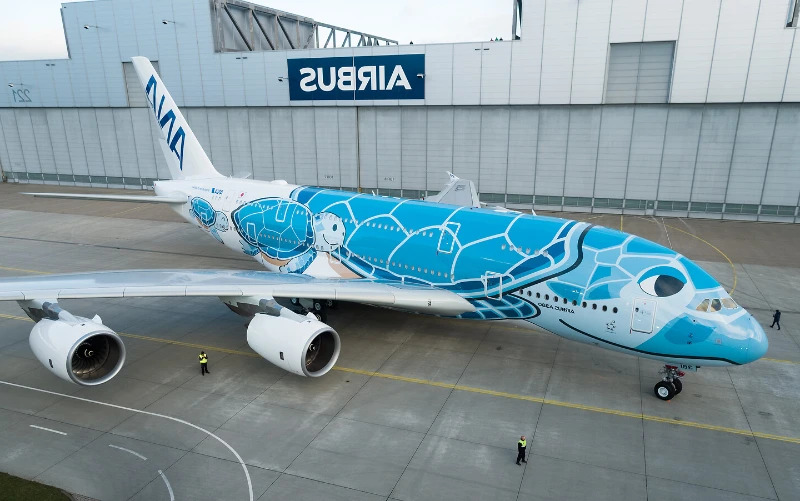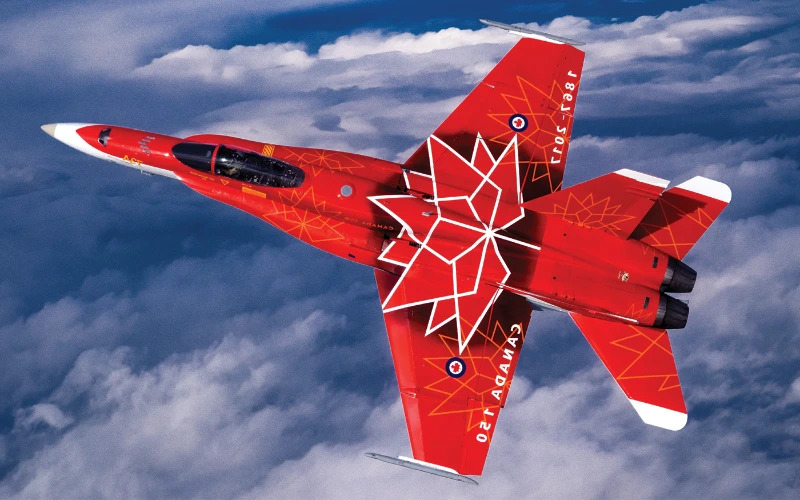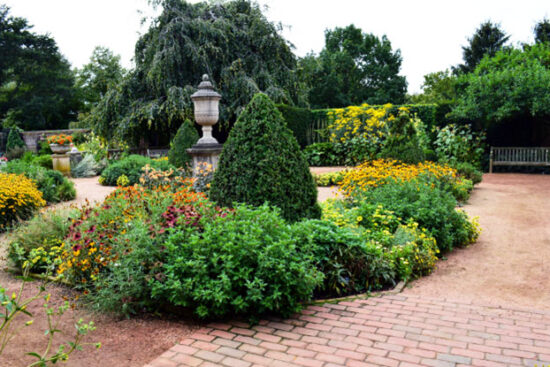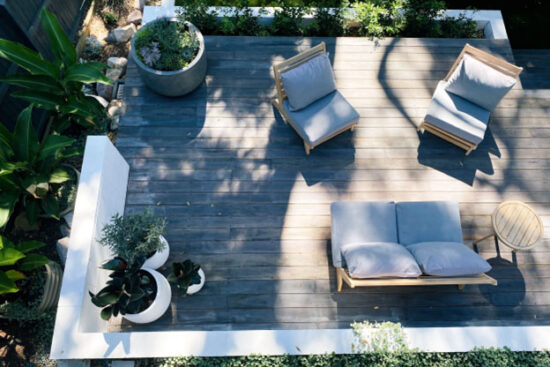Resuming a more conventional but equally striking paint scheme, we come upon the A-10 Warthog in its environment, with a classic olive drab green livery that recalls its original design objective. Although many people may know this specific paint job, it offers a unique touch that distinguishes it from the Warthog look-through norm. The most famous aspect of the aircraft—its nose art—fits the olive drab hue. Inspired presumably by the aircraft’s nickname and reputation as a terrifying ground attack platform, this custom-painted A-10 features a scary nose design. Combining the aggressive nose art with the traditional military green produces a visual depiction of the dual essence of the A-10—a mix of utilitarian purpose and menacing appearance. This paint job improves the aircraft’s already strong appearance in addition to honouring its historic legacy. Representing the aircraft’s reputation as a tough, no-nonsense battle machine, this design achieves a harsh look that is absolutely A-10. Seeing this olive drab Warthog with its bespoke nose painting is like seeing a piece of living aviation history, a reminder of the legacy and ongoing usefulness of this legendary aircraft in current conflict, for both military personnel and aficionados.
11.Gulfstream SexyJet
 Appropriately called “SexyJet,” Clay Lacy Aviation’s amazing Gulfstream GV epitomises luxury aviation design. With a rare and very costly chameleon paint finish that changes colours based on viewing angle and lighting conditions, this amazing aircraft is The paint job by itself is evidence of modern aviation finishing methods, which call for specific materials and professional application. Beyond its obvious beauty, this Gulfstream GV presents an inside that complements its outside appeal. The cabin features a complete range of luxury conveniences, from a full-size galley for in-flight dining to carefully placed power outlets for business equipment to handy fold-out work tables for productivity and a private lavatory guaranteeing passenger comfort. Driven by two modern Rolls-Royce engines that offer dependability and remarkable range, the aircraft’s performance qualities are similarly remarkable. The “SexyJet” is a unique example of how bespoke aircraft painting can transform an already valuable aircraft to new levels of sophistication because of its visual attractiveness, luxurious amenities, and technical perfection.
Appropriately called “SexyJet,” Clay Lacy Aviation’s amazing Gulfstream GV epitomises luxury aviation design. With a rare and very costly chameleon paint finish that changes colours based on viewing angle and lighting conditions, this amazing aircraft is The paint job by itself is evidence of modern aviation finishing methods, which call for specific materials and professional application. Beyond its obvious beauty, this Gulfstream GV presents an inside that complements its outside appeal. The cabin features a complete range of luxury conveniences, from a full-size galley for in-flight dining to carefully placed power outlets for business equipment to handy fold-out work tables for productivity and a private lavatory guaranteeing passenger comfort. Driven by two modern Rolls-Royce engines that offer dependability and remarkable range, the aircraft’s performance qualities are similarly remarkable. The “SexyJet” is a unique example of how bespoke aircraft painting can transform an already valuable aircraft to new levels of sophistication because of its visual attractiveness, luxurious amenities, and technical perfection.
12.Alien Tiger Hind

Though several amazing aircraft designs have come out of the NATO Tiger Meet, this specific helicopter is among its most outstanding creations. Claiming the esteemed Best Looking Tiger Aircraft title, the “Tiger Hind” received well-earned praise at the 2016 NATO Tiger Meet in Zaragoza, Spain. This custom-painted chopper is an amazing mix of military utility and artistic expression. The design distinguishes it from traditional military aircraft liveries by including complex tiger-themed motifs while nevertheless keeping a clearly alien and futuristic look. The paint scheme’s meticulous approach highlights the design team’s extraordinary talent as well as the painters’ who realised this idea. Tiger themes combined with otherworldly components produce a startling harmony between creative creativity and military aggressiveness. This award-winning design is evidence of the creative potential in military aviation aesthetics since it shows that even utilitarian military aircraft can be turned into magnificent works of art while keeping their operational capability.
13.Sukhoi Su-57

Digital camouflage paint schemes of the Sukhoi Su-57 are a masterclass in contemporary military aircraft design. One of the most intricate and strikingly beautiful paint schemes in modern aviation, this Russian fifth-generation fighter jet Often referred to as “Digi-camo,” the digital camouflage pattern has both aesthetic and functional uses, possibly improving the aircraft’s stealth capacity and producing a clearly modern look. The design clearly resembles those of American F-16s, underscoring the intriguing cross-pollination of design concepts in military aviation. Beyond only the paint scheme, the parallels between this aircraft and the USAF’s F-22 Raptor challenge interesting debates on parallel development in fighter jet design. Combining practical needs with aesthetic appeal, the accuracy and complexity of the digital camouflage pattern show the advanced painting techniques needed for contemporary military aircraft. This paint scheme not only accentuates the already remarkable Su-57 shape but also symbolises the changes in military aircraft finishing in the twenty-first century.











 Appropriately called “SexyJet,” Clay Lacy Aviation’s amazing Gulfstream GV epitomises luxury aviation design. With a rare and very costly chameleon paint finish that changes colours based on viewing angle and lighting conditions, this amazing aircraft is The paint job by itself is evidence of modern aviation finishing methods, which call for specific materials and professional application. Beyond its obvious beauty, this Gulfstream GV presents an inside that complements its outside appeal. The cabin features a complete range of luxury conveniences, from a full-size galley for in-flight dining to carefully placed power outlets for business equipment to handy fold-out work tables for productivity and a private lavatory guaranteeing passenger comfort. Driven by two modern Rolls-Royce engines that offer dependability and remarkable range, the aircraft’s performance qualities are similarly remarkable. The “SexyJet” is a unique example of how bespoke aircraft painting can transform an already valuable aircraft to new levels of sophistication because of its visual attractiveness, luxurious amenities, and technical perfection.
Appropriately called “SexyJet,” Clay Lacy Aviation’s amazing Gulfstream GV epitomises luxury aviation design. With a rare and very costly chameleon paint finish that changes colours based on viewing angle and lighting conditions, this amazing aircraft is The paint job by itself is evidence of modern aviation finishing methods, which call for specific materials and professional application. Beyond its obvious beauty, this Gulfstream GV presents an inside that complements its outside appeal. The cabin features a complete range of luxury conveniences, from a full-size galley for in-flight dining to carefully placed power outlets for business equipment to handy fold-out work tables for productivity and a private lavatory guaranteeing passenger comfort. Driven by two modern Rolls-Royce engines that offer dependability and remarkable range, the aircraft’s performance qualities are similarly remarkable. The “SexyJet” is a unique example of how bespoke aircraft painting can transform an already valuable aircraft to new levels of sophistication because of its visual attractiveness, luxurious amenities, and technical perfection.




